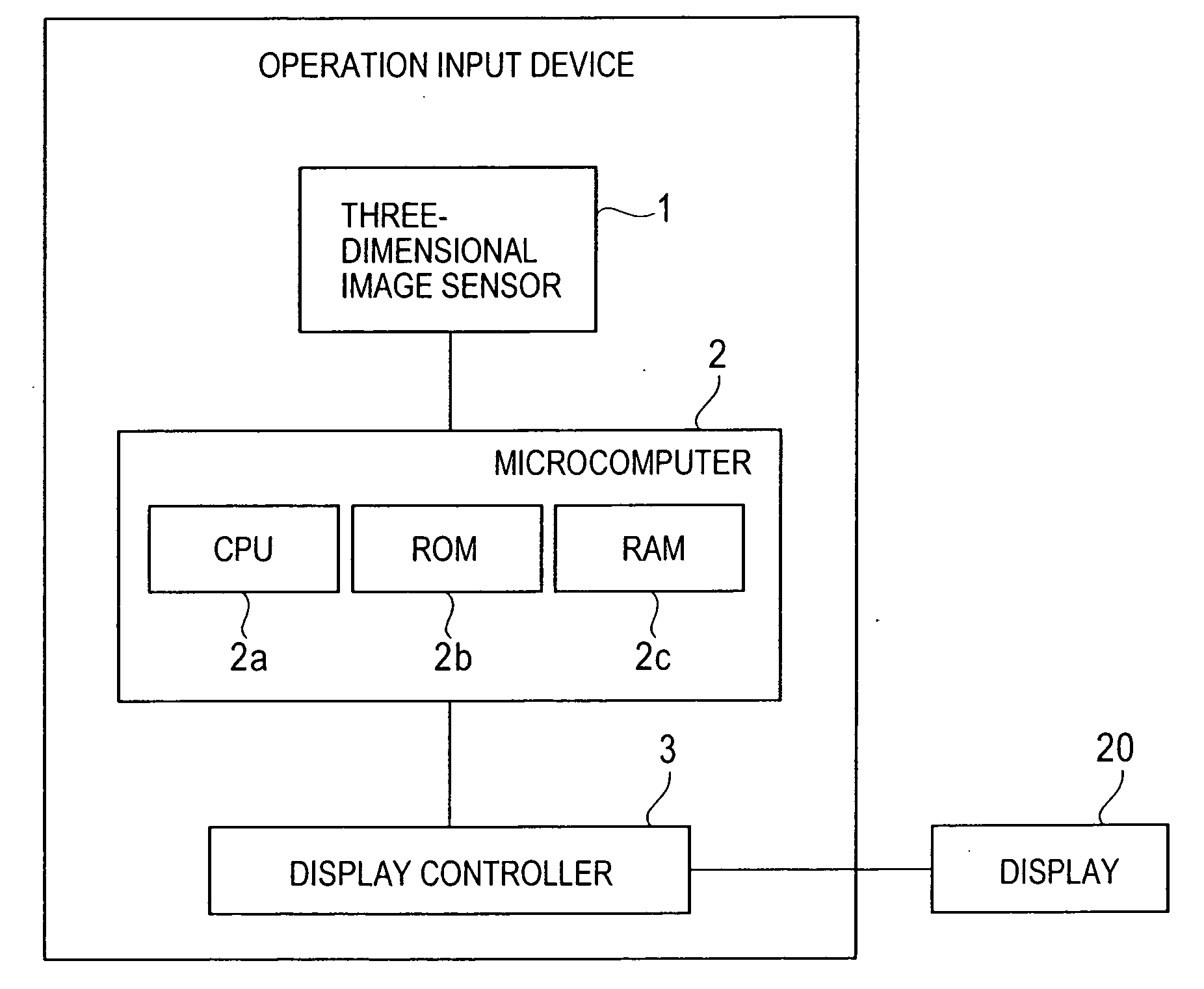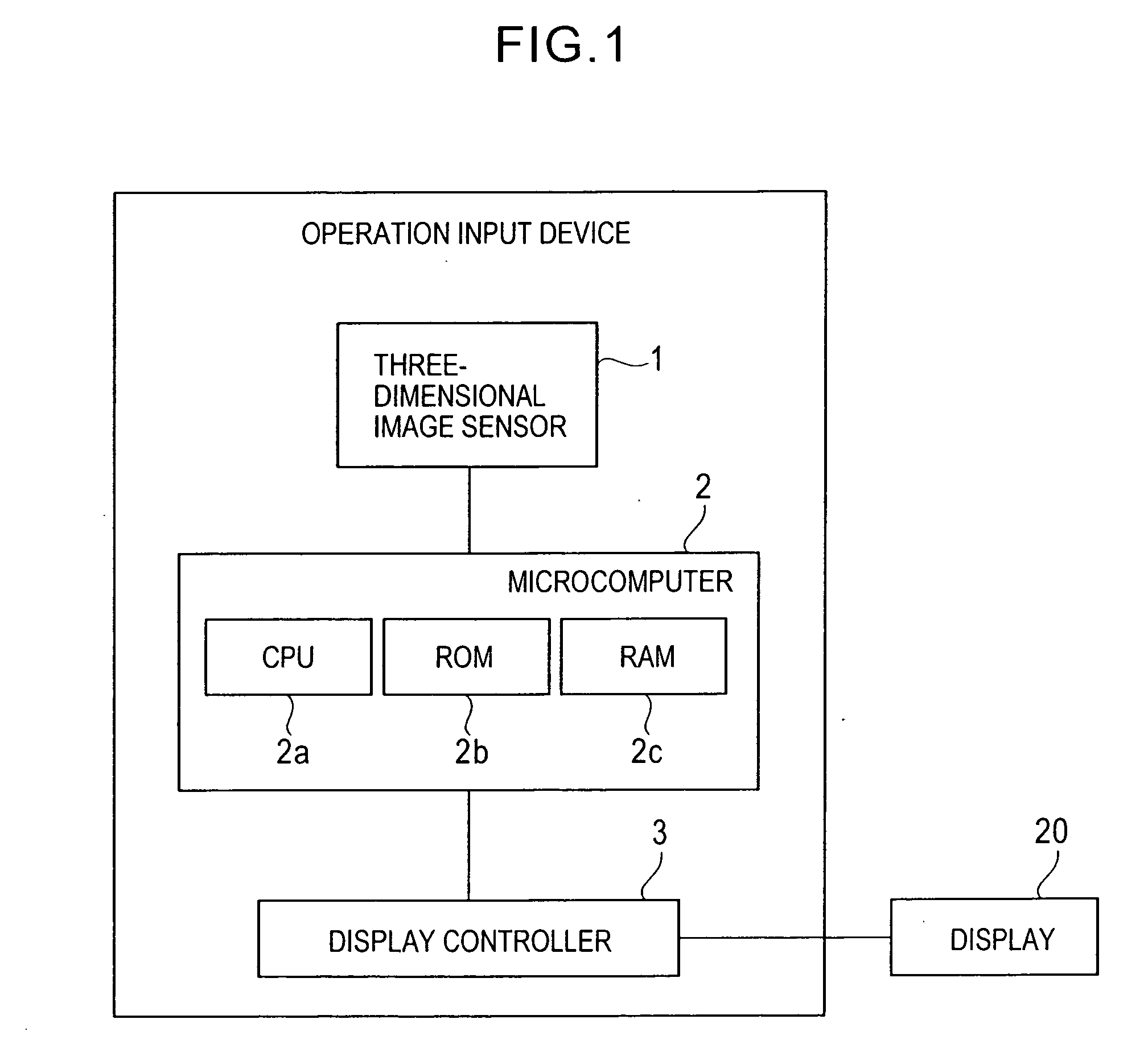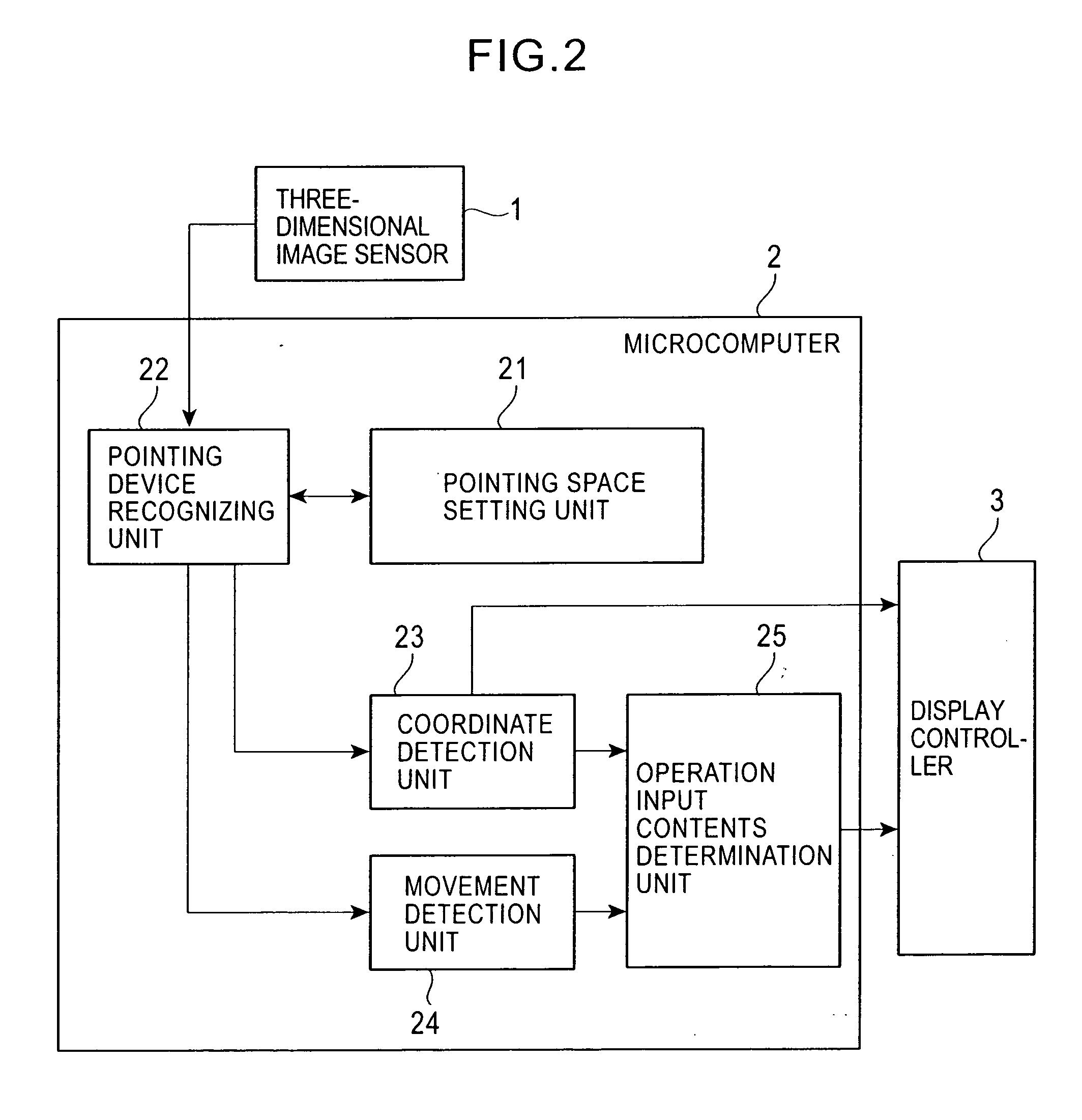Operation input device and method of operation input
a technology of operation input and input device, which is applied in the direction of mechanical pattern conversion, instruments, cathode-ray tube indicators, etc., can solve the problems of troublesome work, device user-unfriendly, and inconvenient use of different devices for different operations, so as to facilitate operation input without reducing the pointing area
- Summary
- Abstract
- Description
- Claims
- Application Information
AI Technical Summary
Benefits of technology
Problems solved by technology
Method used
Image
Examples
first embodiment
[0049] Referring now to the drawings, an embodiment of the present invention will be described. FIG. 1 is a drawing showing an example of a structure of an operation input device according to a first embodiment. As shown in FIG. 1, the operation input device according to the first embodiment includes a three-dimensional image sensor 1 as a position detecting means, a microcomputer 2 including a CPU 2a, a ROM 2b and a RAM 2c, and a display controller 3 as a display controlling means for controlling the display of a display 20.
[0050] The three-dimensional image sensor 1 is for detecting a three-dimensional position of an object in a space. For example, the distance to the object (the relative position of the object) is detected by irradiating a beam to the object and measuring the beam which is reflected back therefrom. For the three-dimensional image sensor 1, for example, a known technology which is disclosed in U.S. Pat. No. 6,515,740 may be applied. With the technology described ...
second embodiment
[0073] A second embodiment of the invention will now be described. FIG. 6 is a drawing showing an example of the structure of the operation input device according to the second embodiment. In FIG. 6, components represented by the same reference numerals have the same functions, and redundant description will be omitted.
[0074] As shown in FIG. 6, the operation input device according to the second embodiment includes two three-dimensional image sensors 1-1, and 1-2. The three-dimensional image sensor 1-1 is used for detecting the three-dimensional position of the pointing device 34 in the pointing space 32 as in the first embodiment. The other three-dimensional image sensor 1-2 is used for detecting the three-dimensional position of the operator's eye.
[0075]FIG. 7 is a conceptual drawing for explaining the pointing space 32 according to the second embodiment. As shown in FIG. 7, in the second embodiment, the predetermined reference point 31 is set to the position of the operator's e...
third embodiment
[0083] A third embodiment of the present invention will now be described. In the third embodiment, the three-dimensional image sensor 1 is used as the position detection means as in the first embodiment. The functional structure of the microcomputer 2 in the third embodiment is shown in the block diagram in FIG. 10. In FIG. 10, the components represented by the same reference numerals as those shown in FIG. 2 have the same functions, and redundant description will be omitted.
[0084] As shown in FIG. 10, in the third embodiment, a pointing space setting unit 28 having a different function than the pointing space setting unit 21 shown in FIG. 2 is provided as a functional structure of the microcomputer 2. The pointing space setting unit 28 sets the reference point 31 at a position which defines the pointing space 32 so as to allow the operator to operate the pointing device 34 in a natural manner. More specifically, the pointing space setting unit 28 issues an instruction to the displ...
PUM
 Login to View More
Login to View More Abstract
Description
Claims
Application Information
 Login to View More
Login to View More - R&D
- Intellectual Property
- Life Sciences
- Materials
- Tech Scout
- Unparalleled Data Quality
- Higher Quality Content
- 60% Fewer Hallucinations
Browse by: Latest US Patents, China's latest patents, Technical Efficacy Thesaurus, Application Domain, Technology Topic, Popular Technical Reports.
© 2025 PatSnap. All rights reserved.Legal|Privacy policy|Modern Slavery Act Transparency Statement|Sitemap|About US| Contact US: help@patsnap.com



